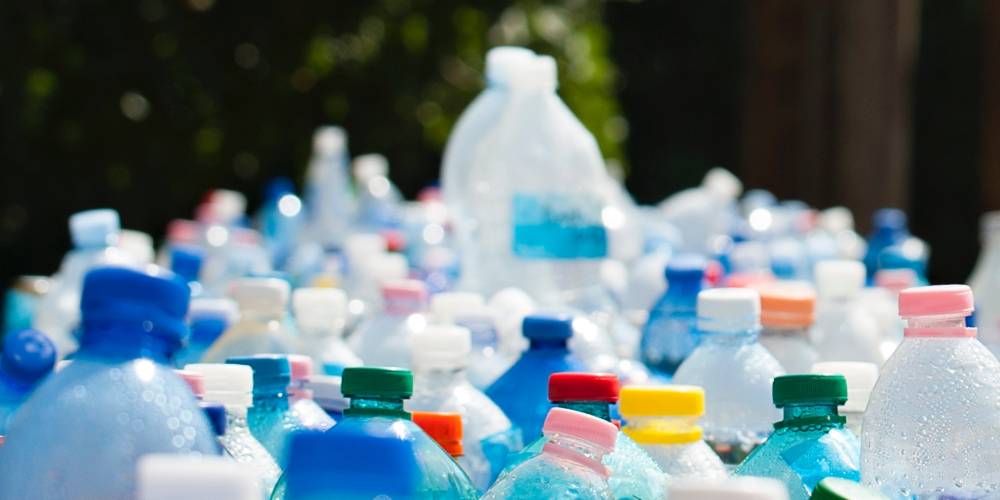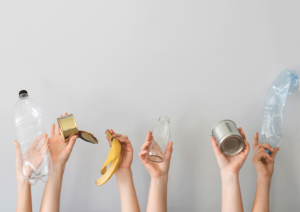Introduction
There’s a growing trend on the horizon and while the topic isn’t new, it appears the conversation is more widespread than ever before. It all revolves around addressing contamination, litter and waste reduction by banning common contaminants, most often, plastic bags and single-use plastics. I for one, had struggled with where I sat on the topic of plastic bags until recently. On one hand, I’d love to see plastic bags banned, but on the other hand I didn’t feel I had fully examined the other side of the debate.
I recently read an opinion article where the writer disagrees with plastic bag bans. Certainly not the first that I’ve read, there are many. Intrigued, and interested in learning what their point of view was, I gave the article a read. The writer points to a plastic waste study done in 2015 that estimated that of the waste created by 192 countries only 5% of land-based plastics made it into the ocean.
Sure 5% seems low given the attention plastics and ocean plastic get, but I always follow my nose if I don’t feel I’m getting the full story. It turns out that 5% is actually a range of 1.7% to 4.6% of plastic waste. An even smaller number – but there’s more to those numbers than meets the eye. These numbers represent a range of 4.8 to 12.7 million metric tons. Let me repeat that, million metric tons. On the lowest end that equates to 5.3 million US tons, the equivalent of approximately 10,000+ Boeing 747-8 jetliners.
While I can’t be sure that the estimated tonnages reported in the study are accurate, I would have to agree with one of the conclusions that “Unless waste management practices are improved, the flux of plastics to the oceans could increase by an order of magnitude within the next decade.” A decade from the date of the article brings us to 2025.
It’s no wonder that many cities, states, provinces and even countries are banning single-use plastic items, or using other means of deterring residents from using them, but the story isn’t the same everywhere. Thankfully many retail companies and fast food chains are also starting to tackle the issue, through their own product packaging changes and material bans, taking initiative before new policies hit the streets.
Government Bans
Five years ago while working for a local municipal government, I was involved in initial investigative discussions around the topic of banning plastics from city facilities and vendors at city-wide events. On the surface, it all seemed pretty simple. You create a new policy, single-use plastics are no longer allowed and that’s it – problem solved.
The hard reality was that this city prided itself on the strides it made to increase waste diversion and reduce contamination, but was still allowing its own vendors and facilities to provide single-use plastic items that in many cases were not recyclable (plastic cutlery, plastic straws, etc.). These items would ultimately contribute to the amount of waste sent to the landfill and in many cases, create enough contamination in the recycling that it required disposal as garbage.
As simple as the solution seems on the surface, it certainly comes with many challenges. The cost of alternative products is often much different than with plastic products. This inevitably requires business owners to take the brunt of the change up front. Of course, not all businesses see this as a problem. For cities, the municipality may have to source new vendors and tweak budgets to accommodate the changes, while ultimately needing buy-in from council. In this particular case, the municipality wanted to use it’s own facilities and vendors as a sort of pilot prior to rolling out a city-wide ban. In 2019, the City of Richmond proposed the new By-Law 10000 to ban single-use plastics in the community.
With growing concern over the negative side effects of so much plastic waste in the environment, many citizens are pushing for government of all levels to help drive change. Single-use plastic and expanded polystyrene packaging policies are spreading from local government to the state level, but as always, not every state or municipality is headed in the same direction.
On one hand California banned plastic bags back in 2016, requiring businesses to offer up reusable shopping bags or recycled content paper bags as an alternative. The ban has proved its success in many ways, especially in the battle against litter. It was reported that plastic bag litter collected during the 2010 Coastal Cleanup Day amounted to 7.4% of waste collected, which dropped to 3.1% in 2017. That’s roughly 40,000 less plastic bags than in 2010. Some even report that after one year, not surprisingly, the ban didn’t cause the world to end.
In other states, such as Colorado, bans of single-use plastics are prohibited, leading municipalities to other alternatives such as fees. Most commonly applied to plastic bags, the City of Denver recently implemented a plastic and paper bag fee of 10 cents. While these fees are often put in place to deter people from choosing the plastic bag over bringing their own reusable bag, there is some good that comes from the fee such as funding recycling education and communications, both from the municipality and the retailers.
Businesses
Government entities are not alone in the battle against single-use plastics and expanded polystyrene. Efforts from retailers range from complete product packaging changes to redesigning existing packaging to make it more recyclable. This, of course, has been an on-going effort for many years. How many of us can remember the time when the big golden arches swapped out their styrofoam sandwich containers to paper based boxes? Dare I remind you that it was in the 90’s?!
Lately the list of retailers and fast food chains that are making efforts (of all ranges) to reduce their impact on waste production has definitely been growing. From coffee chains such as Starbucks to Blue Bottle, and maybe more notably, Dunkin Donuts finally moving away from their cringe-worthy styrofoam cups.
It seems many of these big chains have established some sort of waste reduction and/or recycling goal aimed to be reached over the next 5 to 10 years. I predict you’ll continue to hear more and more about what major fast food chains and retailers have planned over the next year.
The question then will be, how will these changes affect the future of recycling markets? Further, how will local governments and haulers handle communications around the changes needed as trends change. As with market shifts due to Chinese policy changes, plastic bans also present a need for the ability to make on-demand real-time changes to waste reduction and recycling education and information.
Challenges
The challenge is many plastic associations are disputing the claims made by citizens and governments regarding single-use plastics and the problems they create. Often times going as far as to say that issues relating to the toxicity of plastics littered in the environment would not be solved by eliminating plastics.
This same battle is at play in Canada, with many municipal governments pushing forward with bans, only to be blocked by provincial government legislation and plastics associations. Many provincial governments, such as British Columbia, have stated that bans are provincial jurisdiction and others suggesting the matter should be addressed at a federal level. Most recently the Government of British Columbia announced they are working on plans to reduce plastic waste across the province, while Canada’s Prime Minister Trudeau announced the federal government has plans to ban single-use plastics come 2021.
If you’ve paid close attention to this topic, you’ve undoubtedly come across counter arguments that plastic bags have less impact on the environment. Digging further, I came across a well detailed Life Cycle Assessment on grocery bags from Clemson University, comparing the impact of plastic bags to that of paper bags, reusable plastic bags (HDPE) and reusable non-woven polypropylene bags. While the results for non-woven polypropylene bags weren’t great, the results for paper bags were even more damning and I can’t exactly say I’m surprised.
There’s so much more to be discussed on the impacts of these different options, but rather than regurgitate this hard work, might I suggest you grab yourself a coffee and give the study a read. After-all, you might be surprised by some of what you’ll learn. Now that said, there are a couple little things about this study that I believe require a little more discussion. You may notice a trend here. More on that next.
Summary
The Life Cycle Assessment is concluded with a suggestion that plastic bags most likely amount to less than 1% of litter in North America. Again, we’re faced with such a small number and what concerns me is what people take away from reading this. Digging further, you’ll see they came up with this number based on a 2009 study from Keep America Beautiful, in which it’s estimated there are 51 billion pieces of litter alongside roadways across the nation.
If that were the case, then 1% of those pieces equates to 510 million pieces of plastic bags alongside roadways. Even more conservatively, if plastic bags only contributed to 0.1%, we’re still looking at 51 million pieces. I personally cannot fathom how any amount of this is acceptable and certainly not 51 million pieces. Especially since this doesn’t account for litter that blows away from the roadside into forests and waterways. You know, like plastic bags.
Back to the reusable bags. For the sake of my point, I’m only referring to the non-woven polypropylene bags as I don’t think I know one person who knows that HDPE bags are intended to be reusable. Many people tend to forget their reusable bags at home, myself included, because as of yet they haven’t been forced to remember them. If there’s no alternative, you can certainly bet that they will start to change that behaviour in a hurry. Otherwise it’s time to learn how to juggle.
On to the notion that you’d need to use a reusable bag X amount of times before it has less of an impact than a plastic bag. This I just don’t understand. Isn’t that the entire point of the reusable bag? Perhaps I’m just inspired by my mother that is still using reusable shopping bags she got some 15-20 years ago. They may not be built to last that long, but they certainly do. A bag I received when working for the County of Simcoe, ON is perhaps the only bag I own that I can tie a date to. I received this bag in 2009. If I’ve only used it once every 2 weeks that means I’ve used it approximately 286 times and it still has lots of life left to it.
Certainly a ban or fee system is not the only answer, but it is a step in the right direction. After all, it’s 2020 and here we are still relying on a product that was invented some 50+ years ago that has left a mess of our environment and kills 100,000 marine animals a year. It’s time for a change.

Jenny English is a waste and recycling specialist with over 8 years of experience in the industry. She is recognized as a Next-Generation Leader in the waste and recycling industry and was named to Waste360’s 2017 40 Under 40 Award list. Jenny is also a Waste and Recycling Specialist at ReCollect.





